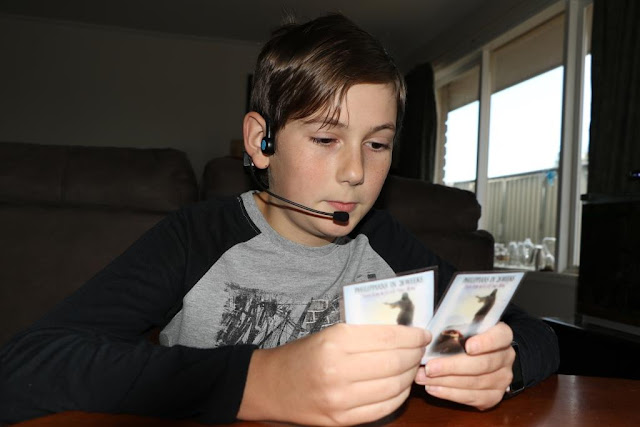What we received
- 1 FORBRAIN® unit (weight 50 grams)
- 1 hard case (190 x 165 x 63 mm)
- 1 charging cable (USB to micro USB cable)
- 3 spare mic covers
- 1 User manual
- 1 quick start guide
- 2 year Warranty
The unit arrived well packaged and delivered by courier upon signature. The product comes in a handy storage case which closes/opens with a zip. The hard shell is lined with firm foam compartment to store the Forebrain unit and USB cable on one side and on the other is a handy net pocket to hold the spare microphone covers and user manuals. We connected the device to my pc for three hours in order to fully charge the battery. The battery will last for six hours of run time. There is a small light which indicates when the unit is on (blue) during charging it is red until the unit is fully charged.
Using Forbrain is very easy.
- Turn the device on by pressing the on / off button
- Place the hoop behind your heard above the neck.
- The earphones are placed on the bone in front of the ears. NOT on the ear.
- The microphone is adjusted to be approximately 3 cm from the mouth and slightly to the left.
It is recommended that Forbrain be used daily in order to maximize results. It can be used with students as young as 5 years old for 15 minutes a day , older teens and adults 20 minutes a day will bring about results.
Forbrain is used to
- Help with focus and attention difficulties
- Assist those with Auditory Processing Disorders
- Reading difficulty
- Memory work
- Speech and Fluency improvement
- Singing (to find the correct tone)
- Strengthening auditory reception and processing.
- Clarifying speech and communication
- Speech and language development
- Improve Attention and memory
Nathaniel has been using Forbrain daily for the last seven weeks. He wears it for approximately 20 min a day Monday to Friday.
He is using it to memorize scripture (we are working our way through Philippians in 28 Weeks). He puts on the Forbrain and reads the scripture memory card. Interestingly we had unsuccessfully tried to learn this before. This time with Forbrain Nathaniel had memorized 70% of the first six verses in chapter one within 5 days!
He is also using it to learn his multiplication tables, and spelling.
Connect with Forbrain
Over All I thought ...
Forbrain has been a fabulous new resource in our homeschool. The simplicity of use (put it on and speak out loud) has made it a very easy to use part of our daily home educating. The possibilities of use include working on dialogue (reading out loud and giving each character a unique voice), rhythm (poetry) and diction (correct pronunciation and clear speech for speaking in front of an audience).
Blessings
Chareen









































